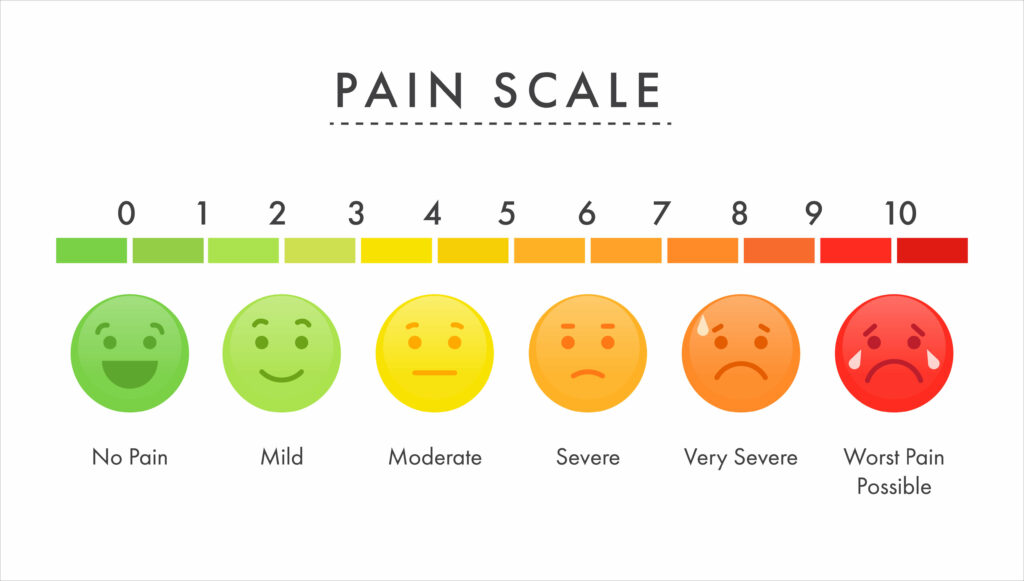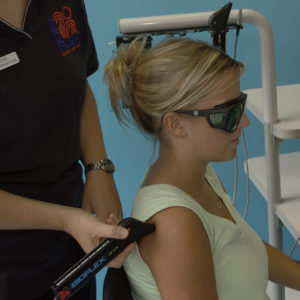Pain means something different to everyone. For some, it’s a slight nuisance that shows up once in a while and can be stemmed or even stopped with simple remedies. For others, it’s a constant companion that doesn’t seem to relent with even the harshest of measures. Pain is technically defined as our body’s signal that something is wrong. It can vary in intensity and duration and can generally be classified into two main categories: chronic pain and acute pain.
While both acute and chronic pain can come from spinal disc herniations, spinal stenosis, shoulder, hip, and knee injuries, including arthritis, these two types of pain have more differences than similarities. They differ in their causes, duration, and treatments. Let’s talk about acute pain versus chronic pain.
Acute Pain
Acute pain is temporary and usually resolved within 3 months. It’s typically due to an injury or irritation to tissues, surgery, or even an illness. Although acute pain is a normal part of our body’s healing process, it shouldn’t be minimized. It’s important to treat the damage caused by acute pain to accelerate healing and defend against its progression to becoming chronic pain. Some examples of acute pain are things like a sprained ankle, a bruised rib, or even a toothache.
If you’ve ever been injured or had to go to the hospital or urgent care, you’ve probably noticed the pain chart on the wall. Your doctor will ask about your pain level on a scale of 1 to 10. During their examination, they’ll also ask you to describe your pain as sharp or dull. They’ll ask you to point to the pain and elaborate. With acute pain, most patients describe it as sharp and localized. This means it’s well-defined and easy to pinpoint.

How to Treat Acute Pain
No pain is good pain. But if you’re a silver-lining kind of person, the good news about acute pain is that it is fairly predictable and manageable. It’s easy to treat and usually subsides as your body heals. Over-the-counter pain relievers, rest, and specific treatments tailored to your injury or condition causing your pain are the most effective options. Depending on the severity of your injury, you may or may not need to consult a physician for your acute pain.
Chronic Pain
Chronic pain is a bit trickier. It’s defined as lasting for longer than 3 months and tends to persist for years and years. For those who suffer from chronic pain, it can be unrelenting and frustrating, affecting both physical and mental health. It’s unpredictable and can fluctuate in intensity over time, leaving the sufferer with good days and bad days. Unlike acute pain, chronic pain is not just a symptom of an injury or illness but a condition in itself. It can result from underlying medical conditions like fibromyalgia, arthritis, migraines, or back pain.
More Americans suffer from chronic pain symptoms than those who suffer from heart disease, cancer, and diabetes combined! This is a big problem, to say the least. When asked to describe the pain associated with their chronic pain, many patients describe it as a dull ache or general discomfort that spreads across a larger region of body. Although chronic pain does tend to target one area, it can affect multiple areas of the body and may be accompanied by other symptoms like fatigue, sleep disturbances, and mood changes.
Chronic Pain and Mental Health
Living with chronic pain can take a significant toll on a person’s mental and emotional well-being. Aside from having to personally deal with being in pain all the time, chronic pain sufferers must grapple with feelings of guilt and shame from feeling like a burden to friends and family. Plans get canceled. Sick days are taken. Chores go undone. Medical bills pile up. On top of all of this, chronic pain sufferers are often prescribed medications on which they can become chemically dependent. It’s a snowball effect that leads those with chronic pain to be four times more likely to have depression, anxiety, social isolation, and a diminished quality of life.

How to Treat Chronic Pain
Although chronic pain is often resistant to traditional pain management, especially as it becomes more complex and degenerative, there is always hope. If you’re reading this and you’re a sufferer of chronic pain, you know that pain pills are a band-aid with a laundry list of their own side effects. Chronic pain often requires a comprehensive treatment plan involving healthcare professionals who look at the cause of the pain, not just the symptoms.
Find Chronic Pain Relief in Scottsdale
Here at LaserTech, our caring and compassionate doctor, Dr. Zimmerman, has been treating chronic pain for more than 30 years. We offer non-invasive laser-based treatment options that get to the root of what’s actually causing your pain. Dr. Zimmerman has found that there are 5 common causes of chronic pain, each of which needs to be addressed simultaneously to achieve more sustainable results.
- Damaged or distorted tissues
- Chronic inflammation and nutritional deficiencies
- Abnormal nerve transmission (firing)
- Functional changes in the muscles, fascia, and other tissues
- The spinal cord and brain can amplify your pain and even be a cause of pain when damaged tissues have healed.
We have a saying at LaserTech, “If you’ve tried it all, give LaserTech a call.” That’s because so many of our patients have literally tried it all. Other blogs and articles will tell you that pain medications, injections, and surgeries are treatment options for chronic pain. But we’re here to share our patients’ experiences with you. We’ll leave you with this, a testimonial from a recent patient.
We hope this has helped explain the differences between chronic pain and acute pain. If you’re in the Scottsdale or Phoenix area and looking for pain relief, give us a call. We offer free consultations where the doctor will determine which of these are involved with your chronic pain. Then, just like he did with Dawn and so many others, he’ll develop a personalized and non-invasive treatment plan that goes after those multiple causes.



